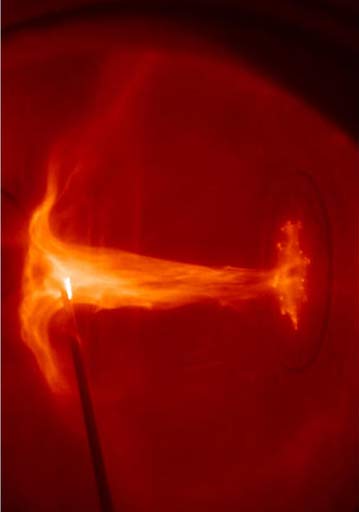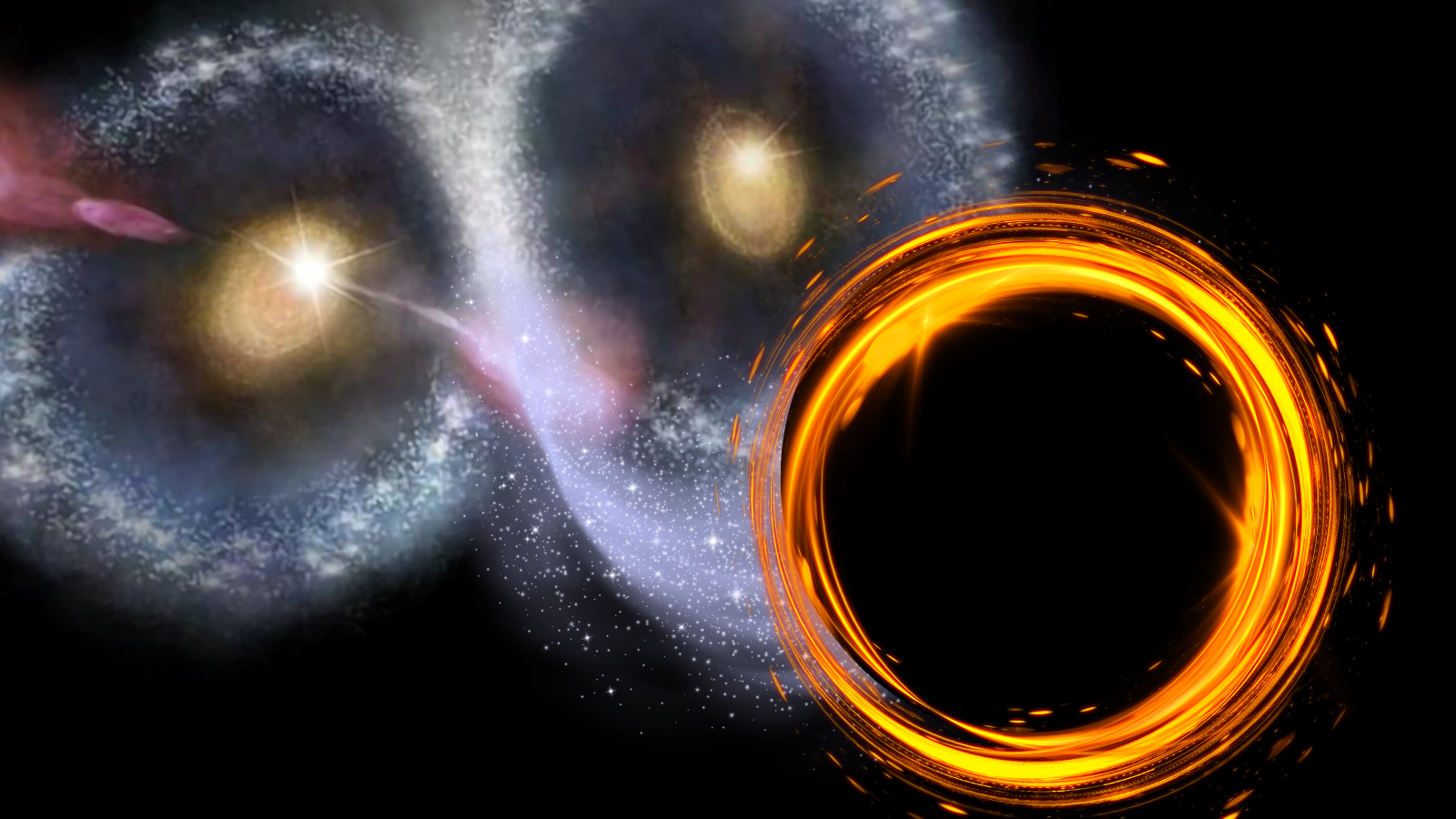Space Jets Recreated in Lab

Hyperfast, exotic streams of gas that have been observed shooting from black holes behave like lines of speeding cars that suddenly encounter heavy traffic, new lab work shows.
In space, long, thin astrophysical jets have been seen traveling in opposite directions from the black hole cores of galaxies' rotational axes, spanning light-years. In Paul Bellan's spherical vacuum chamber at Caltech, similar plasma jets are 13 inches long and fizzle out in less than a second.
Still, jets in space and in Bellan's lab behave in many of the same ways, a finding that explains how astrophysical jets form and could help with efforts to create fusion, the power of the Sun.
"We're not claiming to make scale models, but I think we've captured the essence of astrophysical jets," said Bellan, who first reported making lab plasma jets in 2002. (Scientists from the University of Colorado at Boulder and their colleagues succeeded a year earlier in creating a miniature supernova in the lab.)
That flowing essence involves a slimming down into a denser column, like a lane of cars going 60 mph piling up when a driver ahead slows down to 50 mph. The finding will be detailed in an upcoming issue of the journal Physical Review Letters.
Bellan and his graduate student Gunsu Yun and Caltech postdoctoral scholar Setthivoine You observed the effect in jets of plasma, or superheated gas, that focused or squeezed themselves down in a vacuum chamber into a dense stream, just as you might see cars do in a traffic jam.
The high-tech machine that created the jets is called a spheromak, a closet-sized vacuum chamber with a gas gun inside that shoots plasma from one end at speeds reaching up to 111,800 mph (50 kilometers per second).
Breaking space news, the latest updates on rocket launches, skywatching events and more!
Spheromaks allow for the creation of plasma that seems to self organize into spheres. Bellan and his colleagues set out to study the self organization. "In the process of doing so, (we) found out that we were also in the business of making laboratory simulations of astrophysical jets," he told SPACE.com.
The gas gun shoots plasma when a cloud of hydrogen, neon, or other gas is injected through holes in a flat 50-centimeter-diameter ring of copper barely separated from another flat disk of copper at its center. High voltage electrodes attached to the metal cause the gas to spark into plasma. Electrical currents flow the plasma and freeze magnetic field lines into it, Bellan said.
Initially, the field lines create filaments of plasma shaped like a spider, as if the legs were perched atop the metal disks. In a flash, however, the field lines concentrate filaments near the center of the "spider" into a jet, wrapping around pairs of legs like a series of adjacent rubber bands around a paper tube. The result is a squeezing of the plasma into a thin, concentrated jet. The whole process completes in 20 microseconds, which Bellan was able to digitally photograph with a special camera mounted in a side window of the chamber. The camera can shoot up to 200 million frames per second.
Astrophysical jets in space, which shoot from young stars as well as black holes and galactic nuclei, are highly focused or collimated like Bellan's lab jets.
Ultimately, Bellan is working on generating fusion power, which requires heating gas to about 100 million degrees Kelvin at which point ions can hit each other hard enough to overcome electrostatic repulsion and fuse. All gas converts to plasma, the "fourth state of matter," at temperatures above about 5,000 degrees Kelvin.
The new results show that plasma in a spheromak oddly enough behaves more like a bunch of ropes with empty space between them than a uniform sphere, Bellan said. This understanding might be helpful in understanding how plasma behaves in other donut-shaped chambers, called tokamaks, that scientists use to study plasma and fusion.

Robin Lloyd was a senior editor at Space.com and Live Science from 2007 to 2009. She holds a B.A. degree in sociology from Smith College and a Ph.D. and M.A. degree in sociology from the University of California at Santa Barbara. She is currently a freelance science writer based in New York City and a contributing editor at Scientific American, as well as an adjunct professor at New York University's Science, Health and Environmental Reporting Program.
